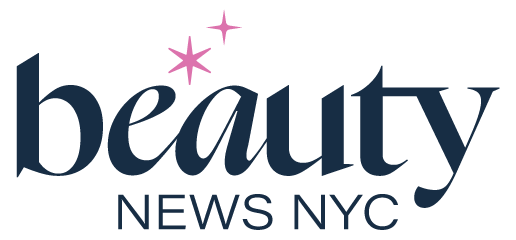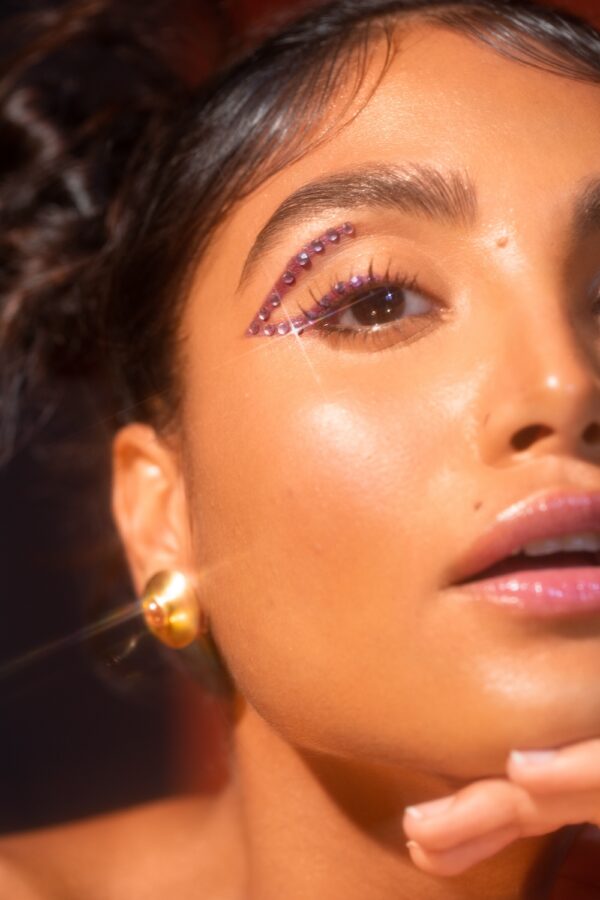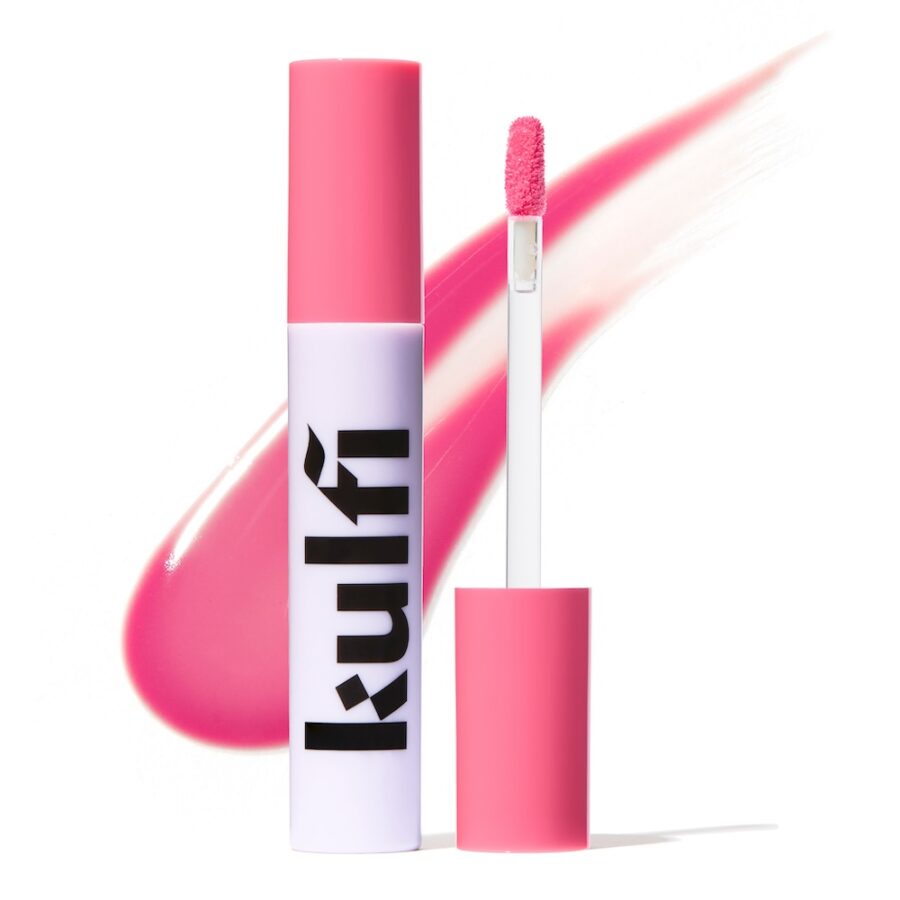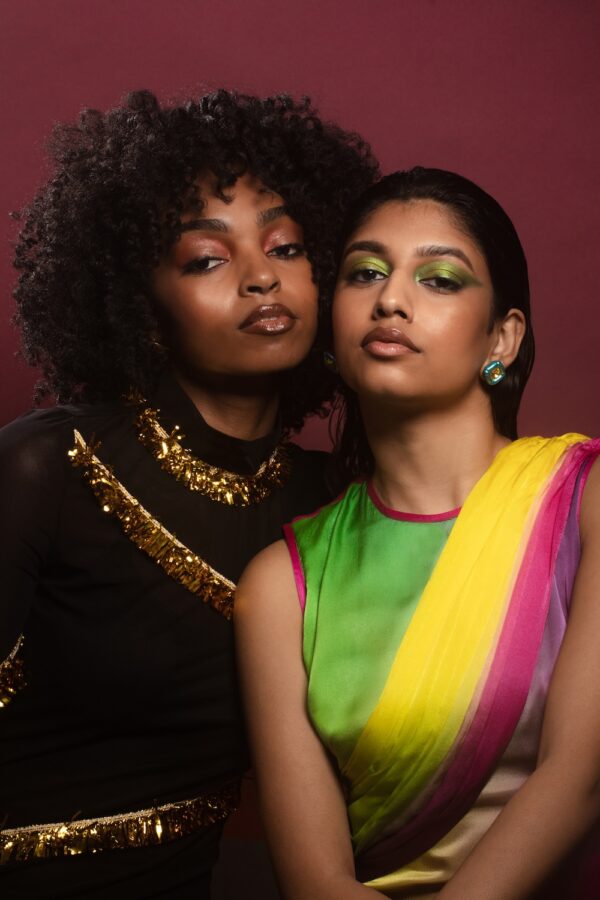
When we think of the cornucopia of dishes from the Indian subcontinent, intricately-spiced flavor profiles and a wide array of sweet and fiery chutneys come to mind as much as the vivid pops of color. Whether it’s the electric red skin of tandoori chicken or bright orange emulsion of a mango lassi, each meal is like a plated rainbow. Similar to its many culinary standouts, Indian beauty and makeup traditions embrace the same maximalist aesthetic by way of elaborate henna decorations, dazzling ruby and emerald jewels, and dramatically-lined eyes.
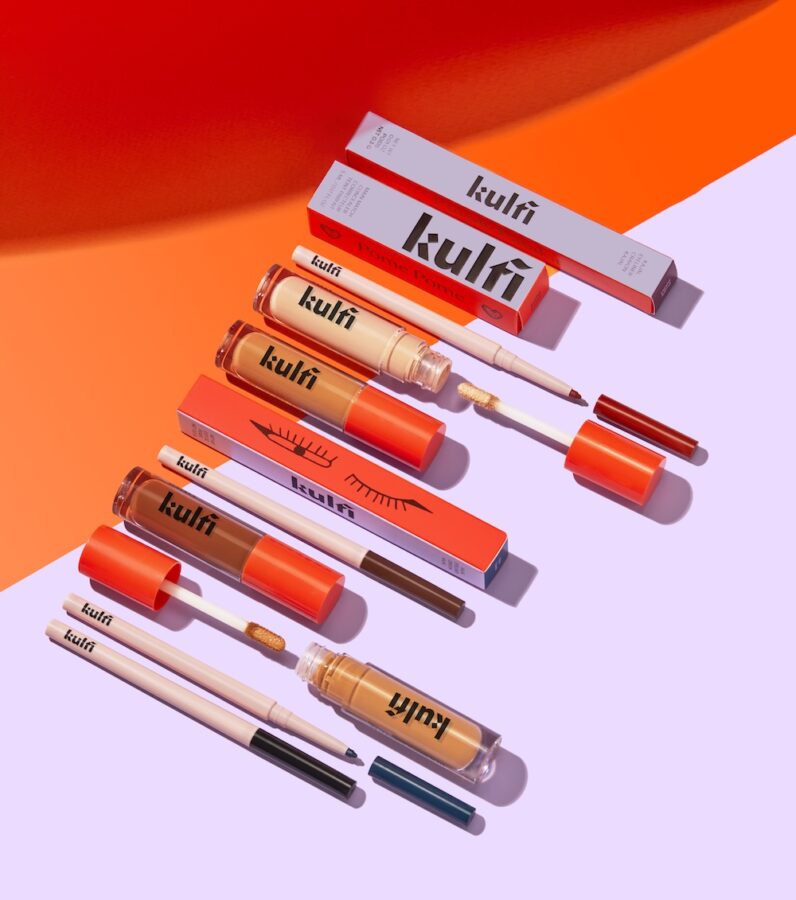 To honor this color-loving culture, female-founded Kulfi harnesses the celebratory spirit of Holi – the festival of colors into – an inclusive makeup line of bold pigments, cutting-edge, long-wearing formulations and makeup looks so sweet and playful they’re like deserts.
To honor this color-loving culture, female-founded Kulfi harnesses the celebratory spirit of Holi – the festival of colors into – an inclusive makeup line of bold pigments, cutting-edge, long-wearing formulations and makeup looks so sweet and playful they’re like deserts.
Kulfi, named after the bright, ultra creamy, often pistachio-flecked, frozen desert sold by vendors in bustling South Asian cities, launched in 2021 with the Kajal Eyeliner. The modern, “slow beaty” take on the traditionally homemade liner delivers bold eye looks with a long-wearing, smudge proof formula in 7 vibrant colors. In addition to the requisite inky black, the liner is available in Daydream (light blue), Jungle Gems (green), and Purply Pataka (berry) for limitless, joyful eye looks, in tandem with the equally eye-popping Zari Eyes Cream Eyeshadows.
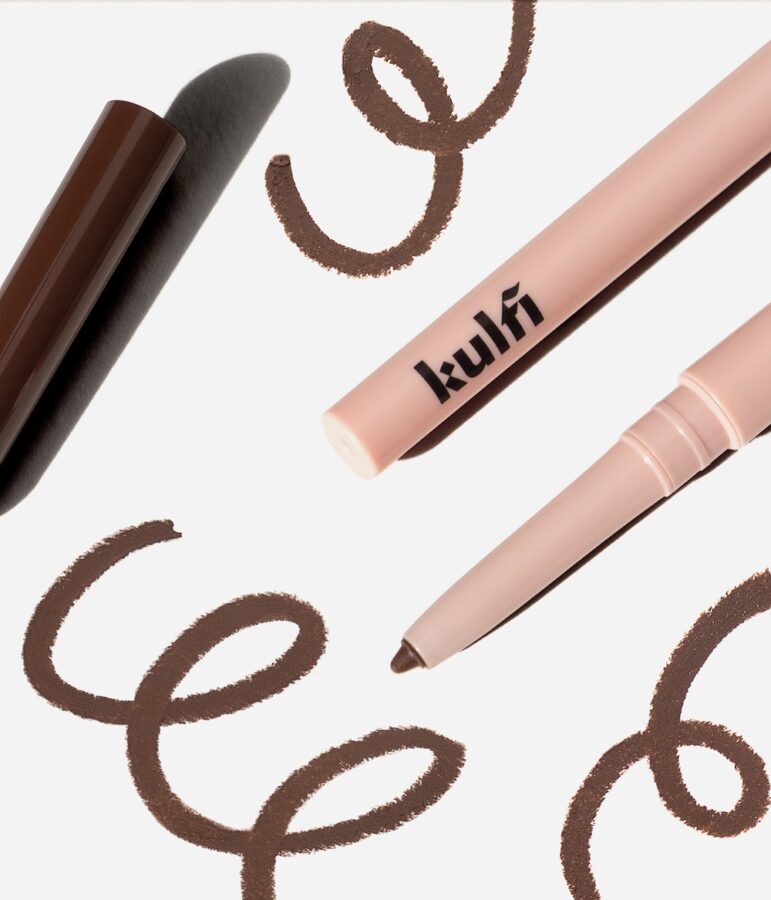 The fast-drying gel liner is essentially a 3-in-1 pencil. It allows for tightlining, smoking out, and/or winging that will not move or smear until removed. With a Kulfi Kaja Pencil sold every 4 minutes, its bonafides as a Holy Grail product are without question.
The fast-drying gel liner is essentially a 3-in-1 pencil. It allows for tightlining, smoking out, and/or winging that will not move or smear until removed. With a Kulfi Kaja Pencil sold every 4 minutes, its bonafides as a Holy Grail product are without question.
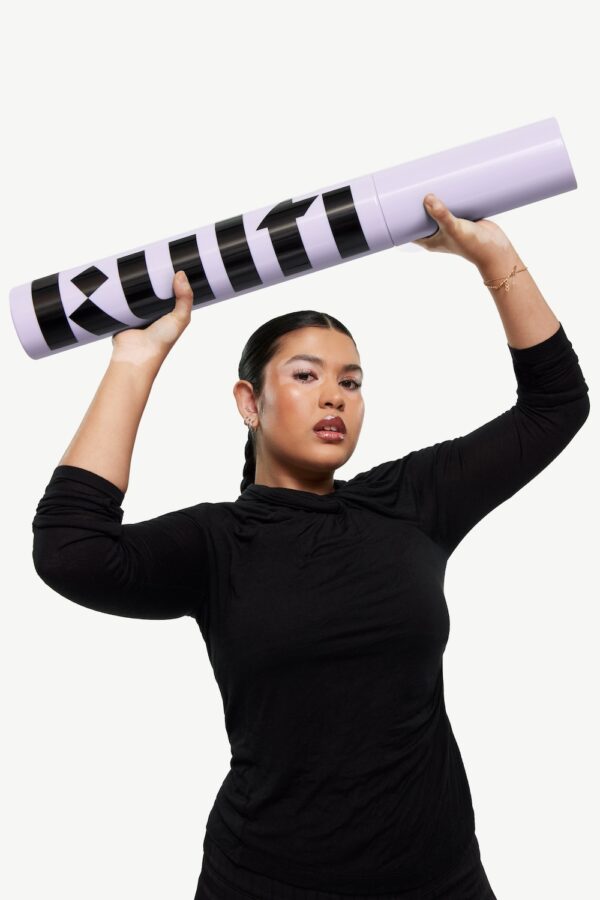
The most recent Kulfi launch – the Badi Lash Mascara – is the first volumizing, tubing mascara on the market. The magic is due as much to the formulation – castor seed oil, rambutan, tri-peptide complex – as to the signature applicator brush with ball tip. The varied bristles catch, separate, coat, and lift even the shortest lashes for maximum eye-opening coverage. Just one smudge proof coat yields falsie-like volume that rinses off with water.
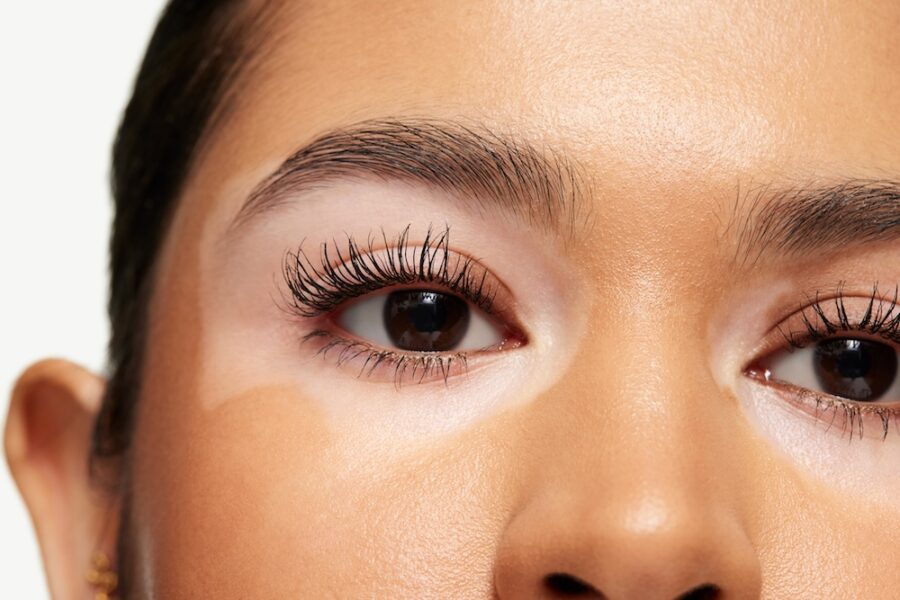 Kulfi’s innovation isn’t just limited to the eyes. Lips get the same love, nourishment, and colorful expression with the Lassi Lips Lip Staining Oil. Like its namesake, the delicious mango yogurt smoothie sold in the same bustling streets as the brand’s namesake frozen desert, it’s a refreshing concoction destined to become a daily indulgence.
Kulfi’s innovation isn’t just limited to the eyes. Lips get the same love, nourishment, and colorful expression with the Lassi Lips Lip Staining Oil. Like its namesake, the delicious mango yogurt smoothie sold in the same bustling streets as the brand’s namesake frozen desert, it’s a refreshing concoction destined to become a daily indulgence.
In 9 shades of pinks, nudes, and burgundies, perfect for all skin tones, it’s a one-of-a-kind hybrid that took 18 months of R&A to develop. Lassi Lips applies like a gloss but finishes like a stain with one, long-wearing, transfer-proof wash of color.
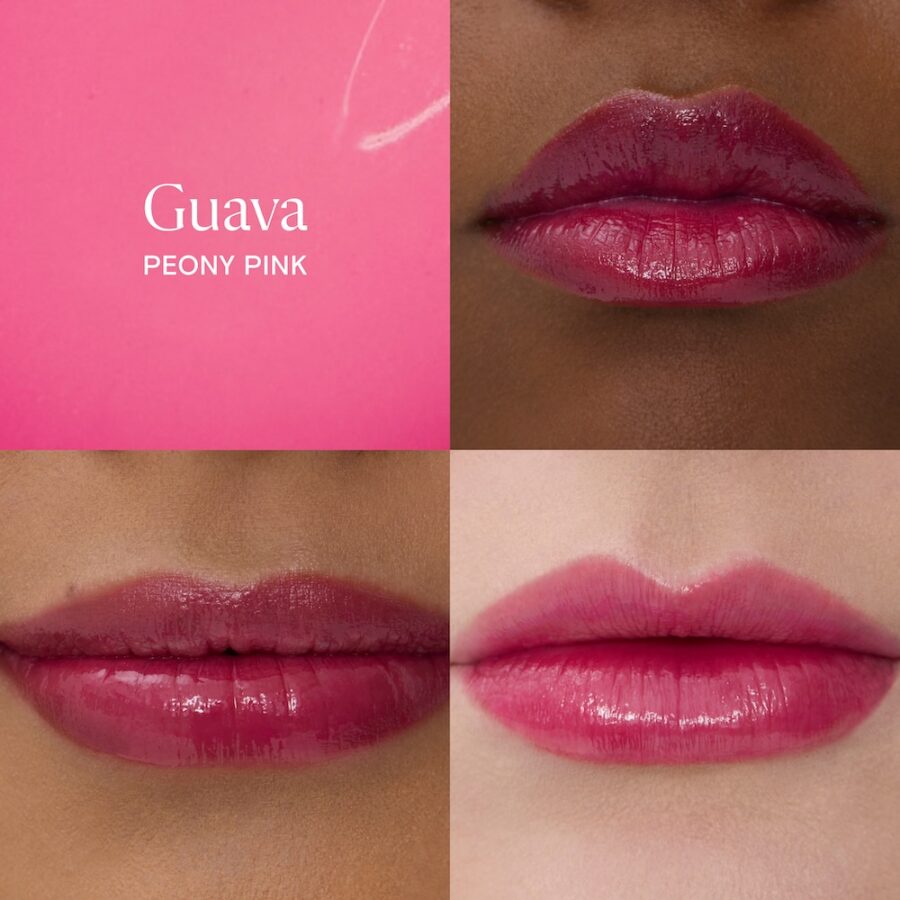 The blend of mango seed and coconut oil keeps the lip supple and moisturized without diminishing the color payoff. Lassi Lips in Guava delivers a perfect strawberry pink, bright and cool-toned, while Lucky Lotus finishes with a deep-toned, sultry burgundy.
The blend of mango seed and coconut oil keeps the lip supple and moisturized without diminishing the color payoff. Lassi Lips in Guava delivers a perfect strawberry pink, bright and cool-toned, while Lucky Lotus finishes with a deep-toned, sultry burgundy.
 As every month is treated as international Women’s Month at Beauty News NYC, I was lucky to chat with the Kulfi’s female-founder Priyanka Ganjoo about learning to embrace and play with her own beauty, honoring and riffing on the traditions of her South Asian heritage, the steep learning curve of being a female entrepreneur in the beautysphere, and inclusiveness of evolving beauty standards.
As every month is treated as international Women’s Month at Beauty News NYC, I was lucky to chat with the Kulfi’s female-founder Priyanka Ganjoo about learning to embrace and play with her own beauty, honoring and riffing on the traditions of her South Asian heritage, the steep learning curve of being a female entrepreneur in the beautysphere, and inclusiveness of evolving beauty standards.
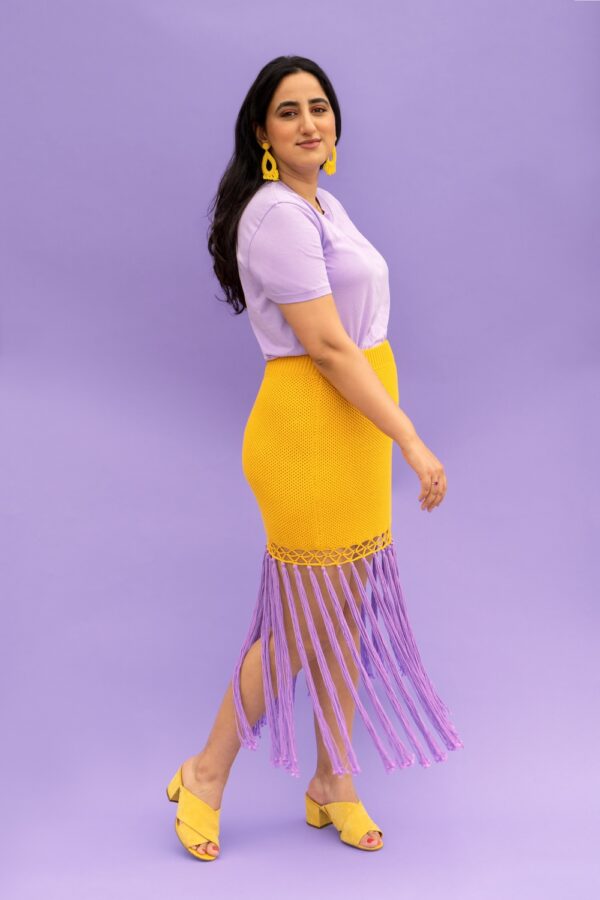
Q&A with Priyanka Ganjoo
1. The beauty and wellness industries are sometimes criticized for fostering women’s insecurities about their appearance and exploiting that insecurity for profit, while others see the beauty/wellness industry as empowering. Where do you fall in this debate?
Throughout time, how people adorn or not adorn themselves represents anything from cultural and spiritual expression, to mechanisms of safety and individuality. Makeup is a tool for us to be the shapeshifters we naturally are. I think of makeup and beauty as a way to express ourselves and shape our narrative and own how we want to present ourselves to the world.
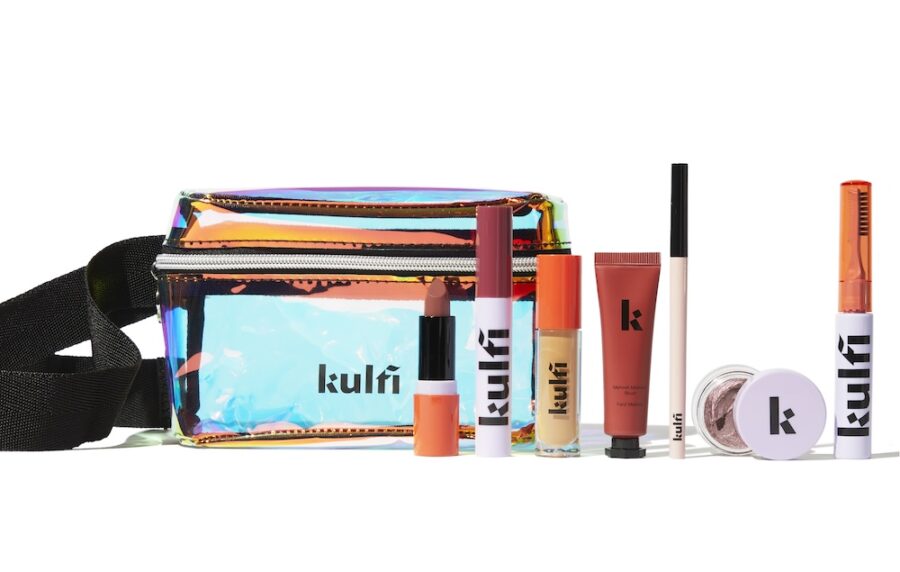 2. Was your line born out of frustration with the existing marketplace? Or were you motivated to address a specific need not addressed by most brands?
2. Was your line born out of frustration with the existing marketplace? Or were you motivated to address a specific need not addressed by most brands?
After a five-year-long career on the corporate side of the beauty industry, I experienced first-hand how South Asian people and culture were underrepresented in beauty. I was a beauty merchandiser for IPSY, and it was my job to find and test the best new brands and products. I had a hard time finding foundations, blushes, and lipsticks that would match my skin tone and compliment my undertones. I also never saw anyone who looked like me in beauty marketing campaigns or behind the scenes running in product development, which always made me feel like I was an outsider. The Eurocentric beauty standards that continue to be the norm in the industry made me feel excluded as a consumer and never good enough. I realized there was a huge gap in products being offered and in who had a voice in beauty both in front of and behind the scenes. That’s what inspired me to start Kulfi.
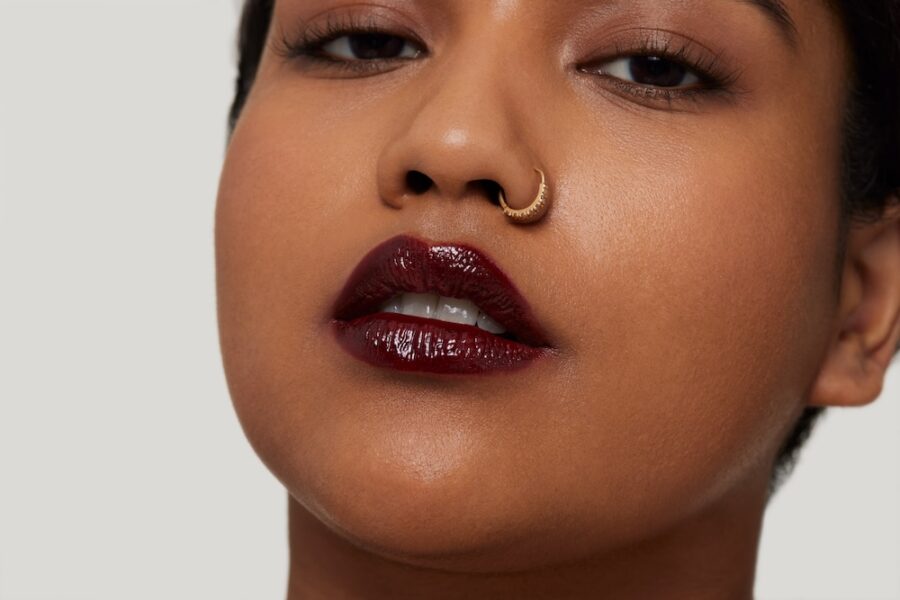 3. What was your eureka moment, when you knew deep-down that it was the time in your life, and in the market, to start your own business?
3. What was your eureka moment, when you knew deep-down that it was the time in your life, and in the market, to start your own business?
Honestly, my journey to becoming a beauty founder is an interesting one. I didn’t start wearing makeup until I was in my late 20s. In my community, makeup was considered frivolous and seen as a way to attract male attention, so when I started working, I was told to wear makeup to look “professional”, which brought on a lot of mixed messages and baggage around makeup.
My “eureka moment” came during my time at IPSY. I discovered makeup on my own terms, playing with color and shimmery shadows and highlighters that you could see from the moon. Once I realized makeup is fun and expressive, and the reason it took me so long to discover that is because I never saw South Asians represented in beauty. At first, I didn’t set out thinking, “I’m going to start a brand,” but after seeing the gaps in the industry firsthand, I knew someone had to do something. Turns out that someone was me!
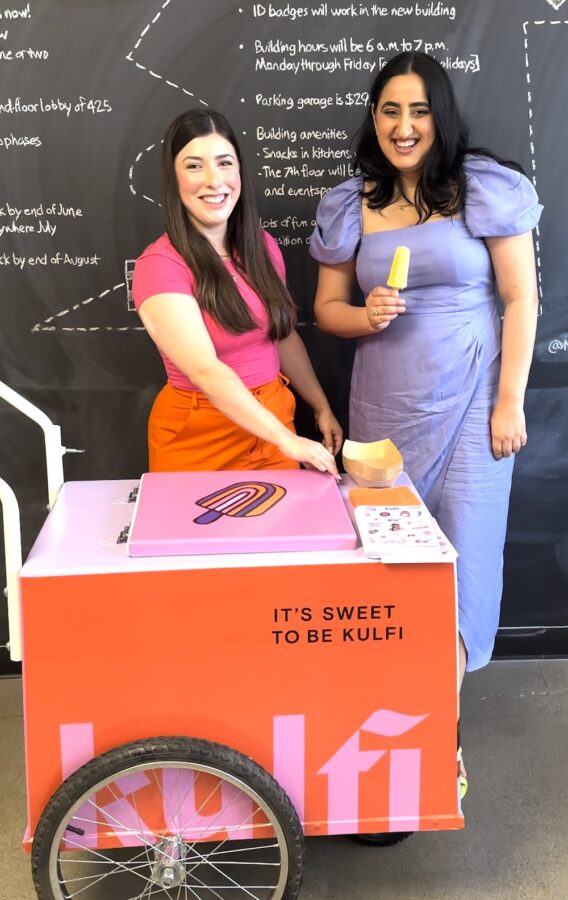
4. What had you wished a more seasoned business owner in any industry had told you when you started?
Advice to readers that I wish was told to me would be to just start. Don’t let perfection be the enemy of the good! Like most people, I tend to be my own worst critic, so starting something new– a brand, a product, a new job, a new look– can feel like such a big risk because it’s your first time doing it. But once you dare to put your first (and likely your most) amateur version or attempt out into the world, you can move on from the fear, so you can focus on getting better at it. Whatever that may be!
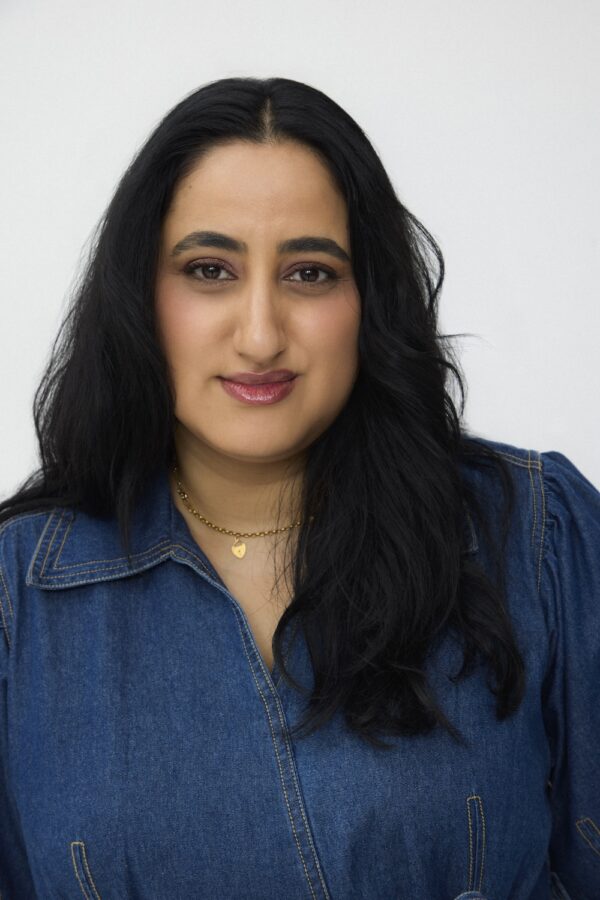
5. When the next generation of women beauty entrepreneurs make themselves known, how will you help or support them?
I’m looking forward to spending more time as an advisor, mentor, and investor to the next generation of women entrepreneurs. I’ve angel invested in two of my peers’ beauty companies and love being able to exchange notes with a community of beauty founders around me.
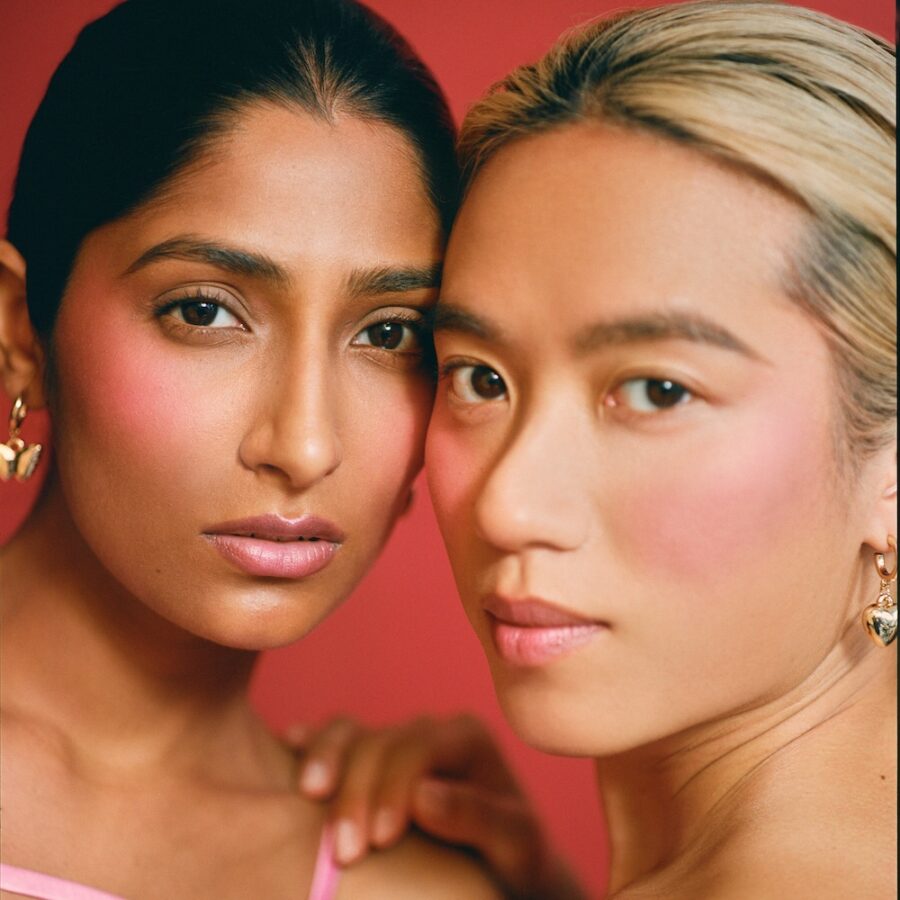 6. In addition to clean formulations and sustainable practices, diversity is one of the hottest trends in beauty and wellness. How does Kulfi approach/embrace diversity?
6. In addition to clean formulations and sustainable practices, diversity is one of the hottest trends in beauty and wellness. How does Kulfi approach/embrace diversity?
Kulfi started with a lack of South Asian representation in the beauty space, since our launch, our campaigns have always featured South Asian models of varying skin tones, and behind the scenes, many of the creatives we work with are South Asian as well. We involve our beauty community, some of whom are South Asian among others, in product development to ensure the products we create serve that customer. We find inspiration in everyday parts of our culture.
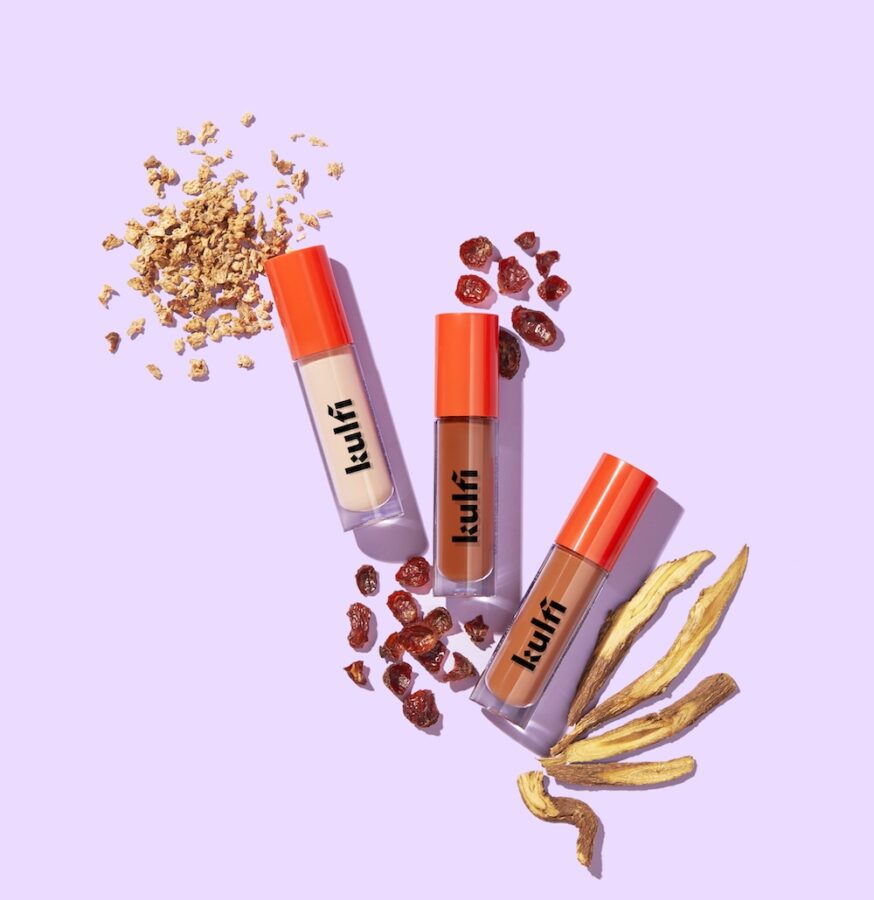
Previous Q&As in the Female Entrepreneur in Clean Beauty Series:
Read Part 1 in the “Female Founders Q&A” series with the Glow Bar CEO HERE.
Read Part 2 in the “Female Founders Q&A” series with the Uzima CEO HERE.
Read Part 3 in the “Female Founders Q&A” series with the Kinship CEO HERE.
Read Part 4 in the “Female Founders Q&A” series with the Raw Sugar Living CEO HERE.
Read Part 5 in the “Female Founders Q&A” series with the Alchimie Forever CEO HERE.
Read Part 6 in the “Female Founders Q&A” series with the Kindness Powered Skincaee CEO HERE.
Read Part 7 in the “Female Founders Q&A” series with the Iles Formula CEO HERE.
Read Part 8 in the “Female Founders Q&A” series with the Blessed Bananas CEO HERE.
Read Part 9 in the “Female Founders Q&A” series with the Exoceuticals CEO HERE.
Read Part 10 in the “Female Founders Q&A” series with the Nekko CEOs HERE.
Read Part 11 in the “Female Founders Q&A” series with the Made By Dentists CEO HERE.
Read Part 12 in the “Female Founders Q&A” series with the MrayaBeauty CEO HERE.
Read Part 13 in the “Female Founders Q&A” series with the Sonela Beauty CEO HERE.
Read Part 14 in the “Female Founders Q&A” series with the Brahmi Beauty CEO HERE.
Read Part 15 in the “Female Founders Q&A” series with the Zen Essentials CEO HERE.
